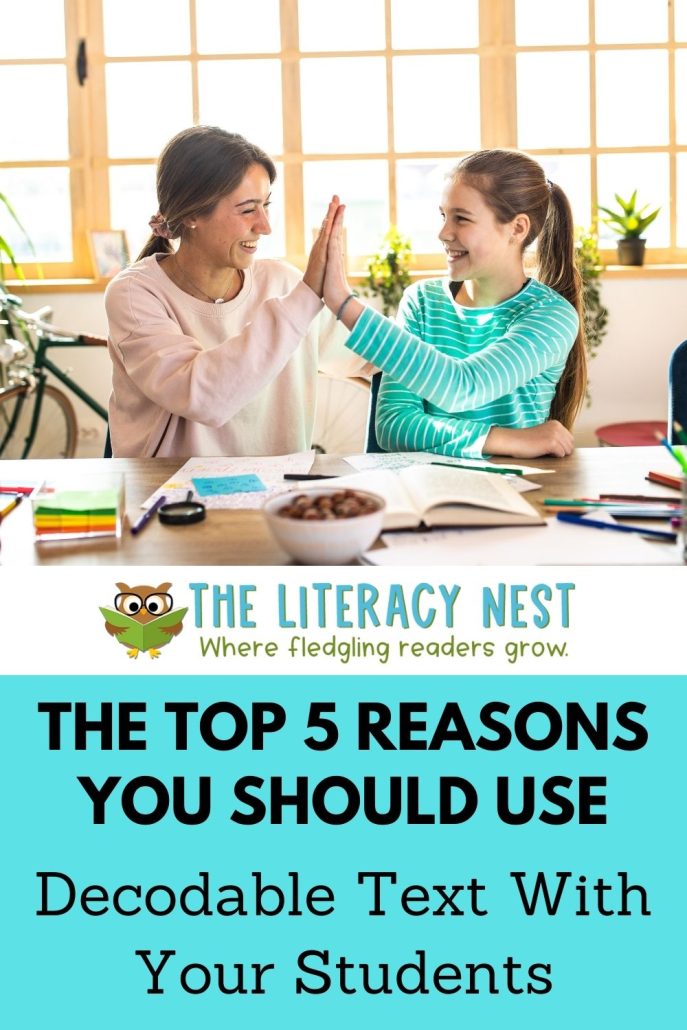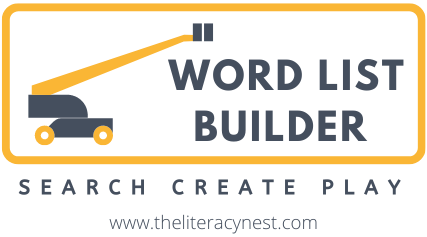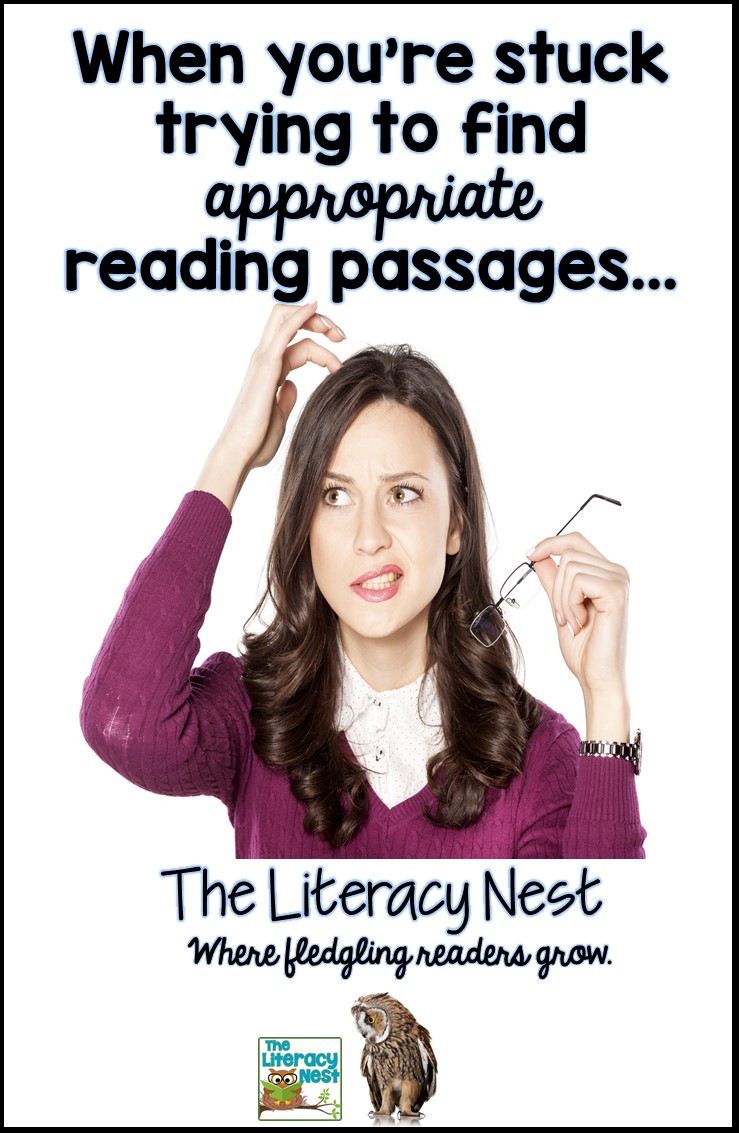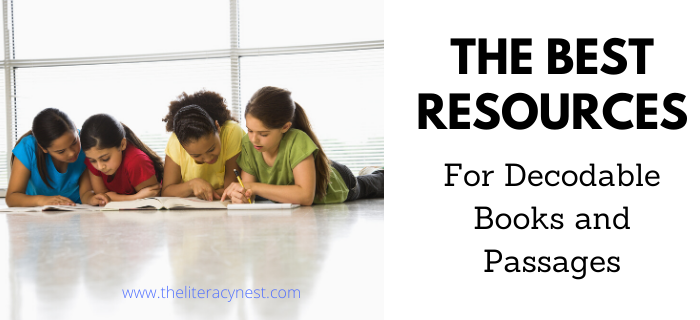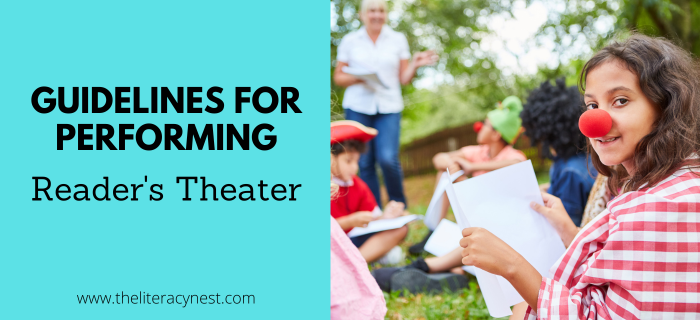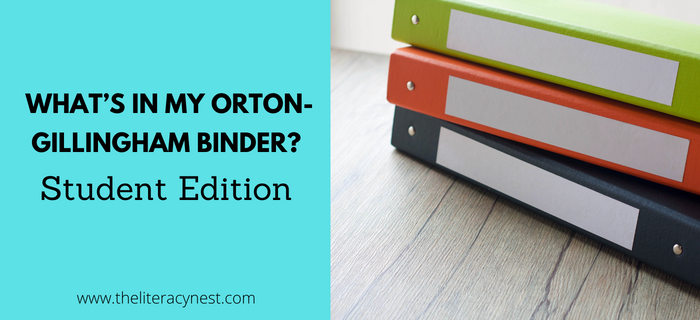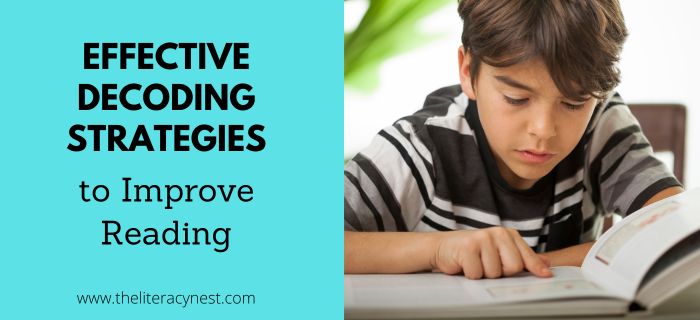The Top 5 Reasons You Should Use Decodable Text With Your Students
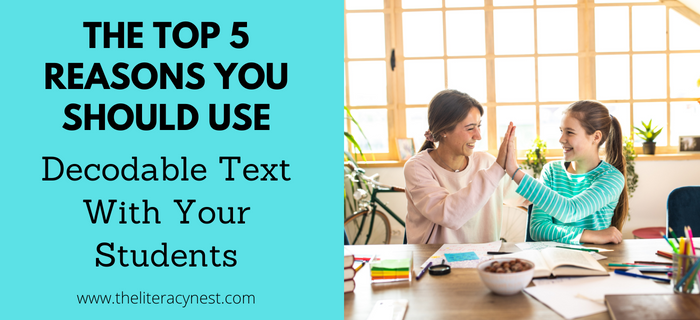
One thing that I find myself frequently explaining to parents, students, and other teachers is the rationale for using decodable texts. Students are accustomed to using leveled texts in their classrooms and in many school-based interventions that follow the balanced literacy model of instruction.
While engaging, there are important reasons why decodable text can be valuable for your students with dyslexia, particularly during the early stages of their Orton-Gillingham lessons or structured literacy intervention.
Here Are Five Reasons You Should Use Decodable Text With Your Students:
Download and print our Reasons to Use Decodable Text checklist!
1. The use of decodable text forces readers to practice their decoding skills instead of relying on pictures or guessing.
Brain research tells us this strengthens the growing neuronal connections in the brain. Watch this video from Stanislas DeHaene to learn more about How the Brain Learns to Read.
Bright children with a good sense of story and fairly strong memory manage to fly under the radar with their reading problems. They may be good at using picture clues to guess. These same children will often struggle dramatically when faced with isolated words, text with no pictures, or multisyllabic words. The use of decodable texts helps them to break old habits and utilize their newly learned strategies.
2. It helps strengthen orthographic memory.
Expand your definition of sight words from irregular words to words that are in a student’s long-term memory and are instantly recognizable in reading or instantly recalled in writing. This core of words makes up your student’s reading and writing vocabulary. The larger the sight word vocabulary, the more fluent a reader becomes.

As your children are exposed to consistent orthographic patterns with repeated exposures, these patterns become more automatic and students develop a sense of when words “look right”. This is something that takes MORE repeated exposures and practice for students with dyslexia. The utilization of decodable texts reinforces these without frequent irregular or untaught phonetic patterns muddying the waters.
3. Children learn to apply their knowledge of explicitly taught phonics skills or spelling concepts.
When we first introduce a particular phonics skill, we begin by introducing that phonics skill at the most isolated and basic level. This phoneme makes this sound. We move into reading words that use the pattern, phrases, sentences, and finally using this phonics skill within continuous text.
The use of carefully chosen decodable text makes that scaffolding process complete. With the same sort of deliberate structure, we support their writing moving from writing the single grapheme, to isolated words and finally sentences. Seeing spelling rules play out and reinforced through the use of decodable text further reinforces those concepts.
Listen to the Together in Literacy podcast episodes about decodable text: 1.8 How Decodable Texts Support Social-Emotional Learning and 3.9 The Purpose & Goals of Decodable Text.
4. Good decodable text follow a systematic progression and won’t teach specific phonics skills or spelling concepts in a disjointed manner.
It isn’t enough to just choose decodable texts. Decodable texts must be chosen wisely to ensure that concepts that have not been introduced are kept to a minimum. The individualized nature of Orton-Gillingham instruction means there is no one-size-fits-all sequence of books or stories. Book choices for a student working on a specific skill.
They can vary tremendously based on the student’s knowledge of irregular words and their sight word vocabulary. Unfortunately, there are a lot of books that call themselves phonics readers, often with appealing characters from television, but are only minimally decodable at first. A good set of decodable readers will largely decodable text and introduce new concepts in a systematic deliberate way.
Want to learn more about various decodable text formats? Watch Decodable Text Formats: Switch it up!
5. Decodable texts are a big step toward fluent independent reading.
There has been significant emphasis on fluency in schools since it was identified as one of the 5 pillars of reading. We measure it frequently and with our knowledge of fluency research, we can see that fluency is not just a component of independent reading, but an outcome of efficient and effective decoding.
Ultimately, we want students reading books that are rich in content knowledge and vocabulary. We want them reading books where they can develop and deepen their comprehension skills. Decodable text helps them on that path. Fluency begins not at the passage level, or even with the phrasing of sentences, but at the word level with rapid and efficient decoding and automatic recognition.
Check out this video presentation about decodable text called, How Decodable Books Support Phonics. I’ve collaborated with Tami Reis-Frankfort from www.phonicbooks.com to share some useful information about how decodable text supports your growing and/or challenged readers.
A Bonus Research Reason!
To understand the critical nature of word decoding, and its link to fluency and comprehension, I turn to a mathematical model. The Simple View of Reading is a mathematical formula of sorts that is one way of describing the complex interaction of decoding skills, language and background knowledge, and reading comprehension. This formula can be summarized as Decoding x Language Comprehension = Reading Comprehension.

The most important component of this equation is the multiplication sign. Note that this is not a simple additive formula in which having decoding skills plus language skills creates reading comprehension. Nor is this a formula that averages the factors. The fact that these skills are multiplicative is incredibly important. This means that a weakness in one of these areas results in a weakness in reading comprehension. Both factors must be strong for strong comprehension to occur. If one variable is strong, comprehension will be equivalent to the weaker variable and if both variables are weak, comprehension will be even weaker than the individual factors.
The typical dyslexic reader is weak in decoding skills and has strong language and listening comprehension skills. Clearly, for their reading comprehension to improve, their decoding ability needs to increase. This is best accomplished through the use of decodable texts.
It is a common myth that primary students in K-2 are learning to decode and older struggling readers need to work on comprehension or fluency. When digging deeper in assessment, that is frequently not the case. Without adequate information about both language/listening comprehension and decoding abilities, it is impossible to choose the best intervention.
A student who has strong decoding skills and weak language skills would need a different type of intervention. This is probably the least common of all struggling reader profiles and is sometimes seen in the case of hyperlexia, which may occur as part of ASD. A typical Title I student may be weak in both areas. Scores may improve a bit with an intervention that addresses meaning and structure in reading, but they may not make the type of gains hoped for.
With both instruction in decoding, reinforced by the use of decodable text, and language comprehension, these students can and do make significant progress.
Finding resources with high-quality decodable text isn’t tricky!
Whether you are looking for decodable bundles or searching for decodable passages with controlled text in my store, I’ve got you covered!
Are you looking for a list of words to use in your structured literacy lessons? Word List Builder has got you covered!
Save time searching for words! Create customized and meaningful review, build your folder of words, create templates and games, and much more in Word List Builder.
